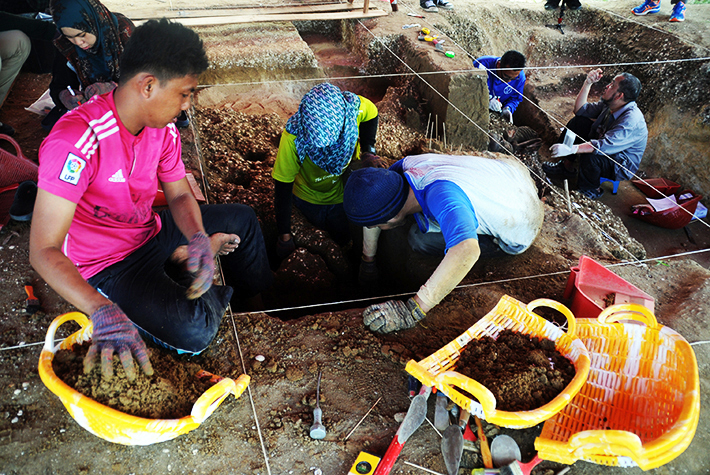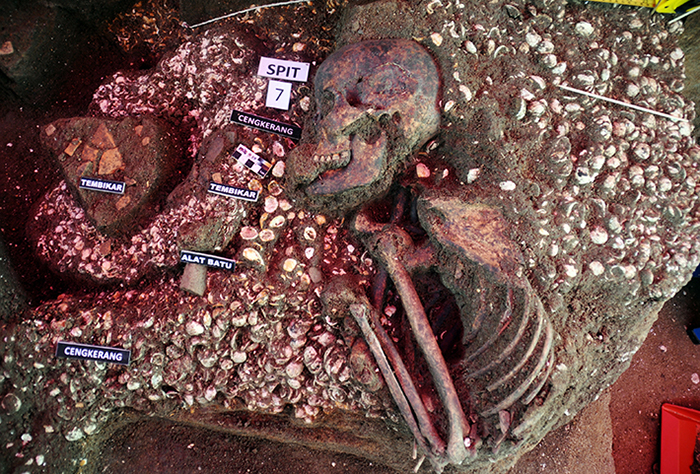USM ARCHAEOLOGY TEAM CONFIRMS PREHISTORIC PRESENCE ON LOCAL SHORES

SEBERANG PERAI UTARA, 25 April 2017 - The archaeology team from Universiti Sains Malaysia (USM) has unearthed skeletal remains estimated to be at least 5,000 years old at a construction site here.
The team from the USM Centre for Global Archaeological Research (CGAR) led by its Director, Professor Dato’ Dr. Mohd Mokhtar Saidin, has provided their expertise in uncovering and assessing the prehistoric remains.


The remains which consist of a skull, femur and rib cage, were discovered as workers were digging the area to be designated for an archaeological gallery.
The area, located alongside the road in Kg Guar Kepah, is well-known in the archaeology circle. It was in the vicinity of the area that the British discovered skeletal remains amidst seashell mounds which existed in the 1800s. The remains are currently kept in Leiden, Holland.


In comparison to Perak Man (discovered by USM then in a cave in Lenggong, Perak), this finding is located close to an ancient shoreline (explaining the presence of seashells). It indicates a community that once stayed and practised a certain culture in the area. The existence of pottery items buried with the remains has placed it within the Neolithic period.

Other areas where seashells have been found amidst human activities include seaside communities in certain parts of Indonesia (Aceh, Medan) as well as still having significance in other communities such as in Senegal. The presence of seashells would highlight many different living practices of those communities.
The discovery by the USM CGAR team has brought to light new data, among which are:
1. It is the only shell-midden burial site to have been discovered locally at present.
2. The skeletal remains have been buried with other objects made from pottery and bearing cultural significance.
3. The practice of burying the dead with their belongings highlights the evidence of a burial ceremony.
4. The discovery is a more extensive continuation and further development of the dig made by the British in the 1800s, and resumed by the USM team since 2010.
5. The discovery complements and completes, up to a point, the research done by USM on the remains of prehistoric communities.
Text: Mazlan Hanafi Basharudin
- Created on .
- Hits: 1933
